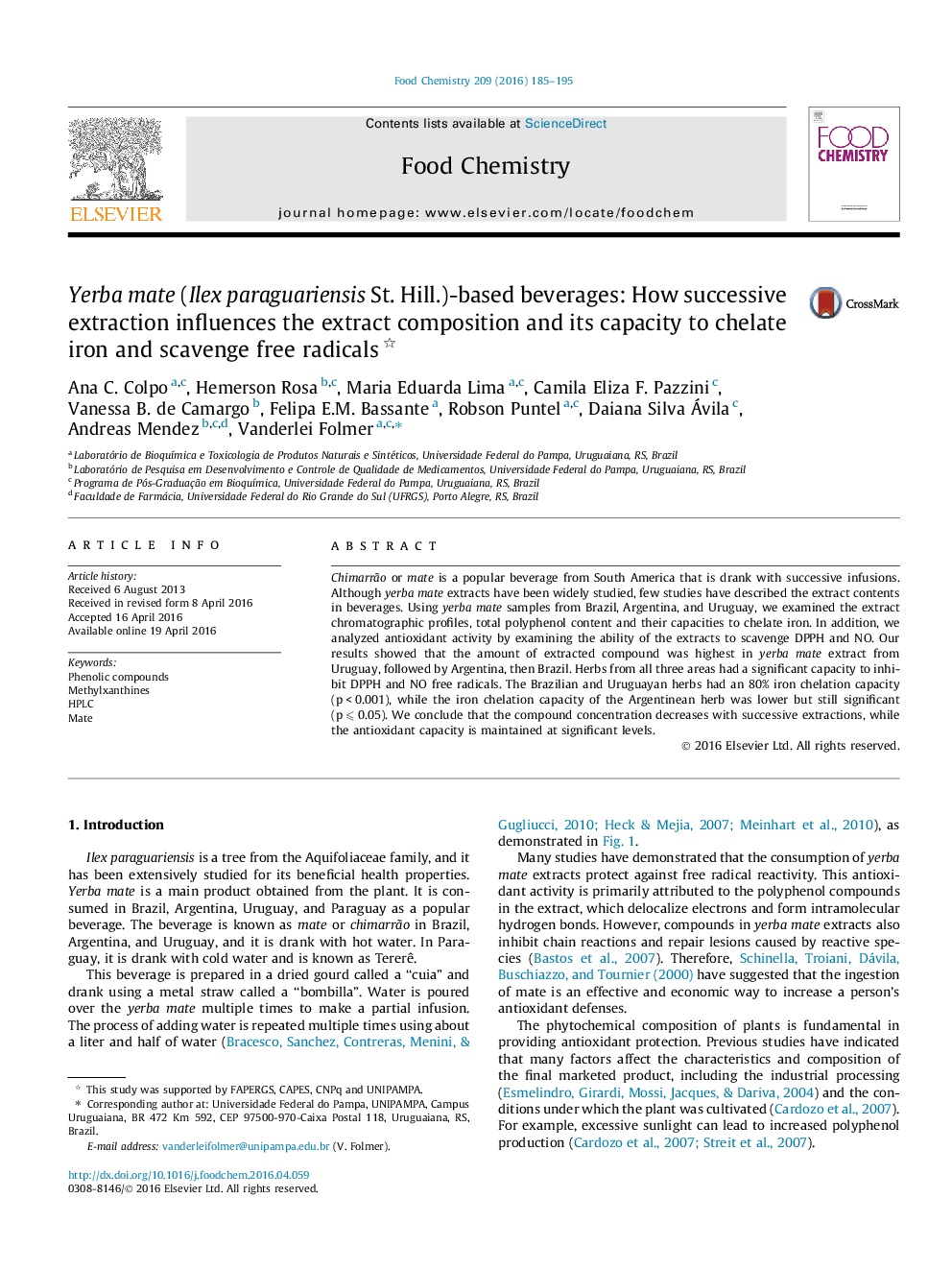| کد مقاله | کد نشریه | سال انتشار | مقاله انگلیسی | نسخه تمام متن |
|---|---|---|---|---|
| 1183136 | 1492083 | 2016 | 11 صفحه PDF | دانلود رایگان |

• This study recreates the “mate” preparation process.
• Yerba mates from different countries differ in the extracted compound content.
• The Uruguayan herbs present higher polyphenol and methylxanthine levels.
• Yerba mate extracts have significant antioxidant and chelating abilities.
• Secondary mate (extracts) exhibit properties similar to the first extract.
Chimarrão or mate is a popular beverage from South America that is drank with successive infusions. Although yerba mate extracts have been widely studied, few studies have described the extract contents in beverages. Using yerba mate samples from Brazil, Argentina, and Uruguay, we examined the extract chromatographic profiles, total polyphenol content and their capacities to chelate iron. In addition, we analyzed antioxidant activity by examining the ability of the extracts to scavenge DPPH and NO. Our results showed that the amount of extracted compound was highest in yerba mate extract from Uruguay, followed by Argentina, then Brazil. Herbs from all three areas had a significant capacity to inhibit DPPH and NO free radicals. The Brazilian and Uruguayan herbs had an 80% iron chelation capacity (p < 0.001), while the iron chelation capacity of the Argentinean herb was lower but still significant (p ⩽ 0.05). We conclude that the compound concentration decreases with successive extractions, while the antioxidant capacity is maintained at significant levels.
Journal: Food Chemistry - Volume 209, 15 October 2016, Pages 185–195